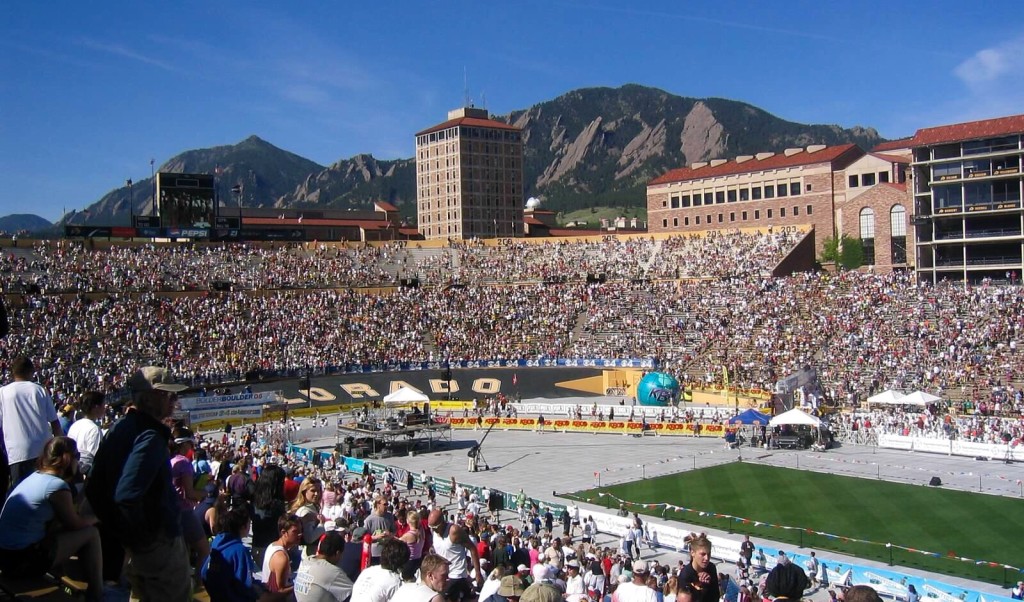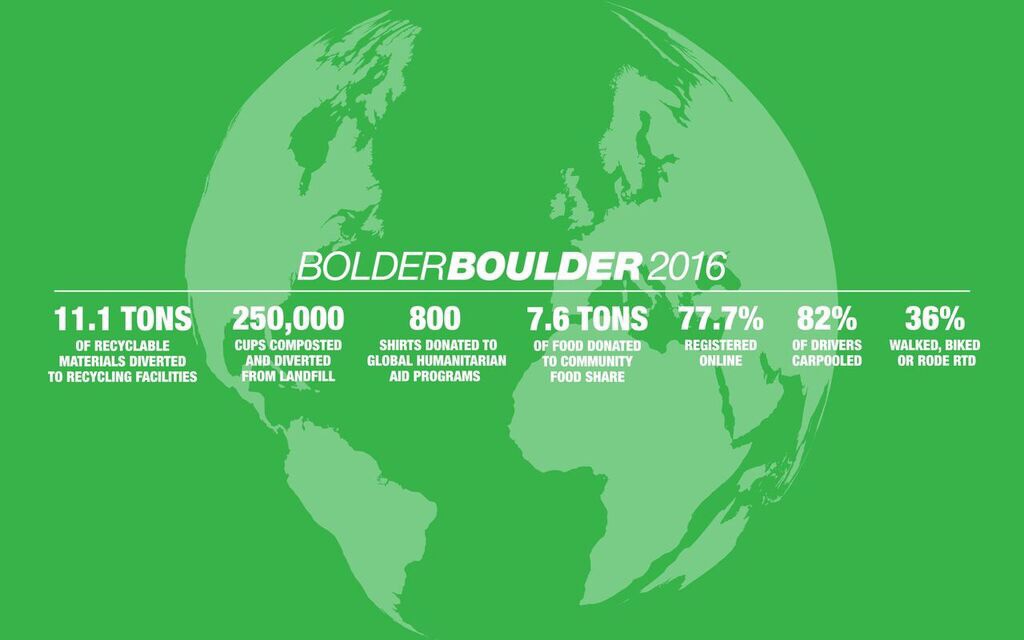There are running races held each weekend around the country from early spring through Thanksgiving. Very few, if any of them have 50,000 runners, 70,000 spectators, and run through an environmentally conscious town. The Bolder Boulder 10K is that race. Most races are small and don’t have to consider their environmental impact. Bringing 100,000 people into a town of 100,000 people for a running race will certainly have an environmental impact. What is that impact? What is the environment of the Bolder Boulder?
First, here’s a bit more about the race. The Bolder Boulder is one of the most popular and largest running races in the United States. Specifically, it is the 3rd largest running race in the US and 7th largest in the world. It is a keystone race in Colorado, which is one of the best states in the country for endurance athletes. It’s an event, a party, and a Memorial Day celebration. Are you really a Colorado runner if you’ve never run the Bolder Boulder?
Although the race day impact is only one day, the influx of people doubles Boulder’s population. There are several environmental impacts that could be assessed: waste management (of several varieties), increases in air pollution and energy use, and planning the event while complying with land-use and other policies. This is not the only event of this size in town. CU home football games and graduation weekends also flood Boulder with tens of thousands of people. Boulder can handle it.
Of the environmental areas impacted, I would place waste management at the top. It’s not just the cups from the aid stations. it’s the portable toilets, trash and recycling from spectators along the course and in the stadium, and every other possible waste from 100,000 people. Although energy use and air pollution (from vehicles) would spike in town, it’s only for one day. It also wouldn’t impact the air quality and energy use of the overall Colorado Front Range. Most of the people coming to the race are from the Front Range (Fort Collins-Boulder-Denver-Colorado Springs). My assessment about waste management seems to be true. The Bolder Boulder coordinates with the CU Recycling Center to develop a recycling plan. The race’s waste diversion plan must be approved by the City of Boulder before receiving their race day permits.
Besides waste management and planning, there is a hard-to-measure environmental impact: the positive impact from spending a day in Boulder. The town’s reputation includes healthy people and a healthy environment. A 10K running race through Boulder’s pleasant streets at the base of the mountains fits that reputation. Maybe your runner’s high will give you an appreciation of the natural beauty and/or the environmental policies that helped conserve it. Either way, I would guess that the City of Boulder is very cooperative in planning. The race is a Boulder icon and is an economic boom. It has a direct impact of $10 million to Boulder.
2016 will be my third Bolder Boulder; previously racing in 2006 and 2008. As I wind through the environmentally friendly streets of Boulder on Memorial Day, I will be thinking about a few of these environmental facts about the race. (Because that’s what environmental professionals do.)
- 250,000 cups composted and diverted from a landfill.
- 82% of runners carpooled to the race.
- 36% walked, biked or rode RTD.
- 2 recycling bins placed next to every 1 trash bin (I’ll have my eye out for this.)
- Single stream recycling dumpsters
- Dumpsters to collect compostable cups
- Post race volunteers sort cans/bottles from the trash when cleaning up the inside of the stadium
Recycling at the 2015 Bolder Boulder saved the following energy and natural resources.
- 48 forty-foot Douglas Fir Trees
- 27,860 gallons of water
- 3.3 MTCE (metric tons of carbon emissions)
- 4.5 cars off the road for 1 year


